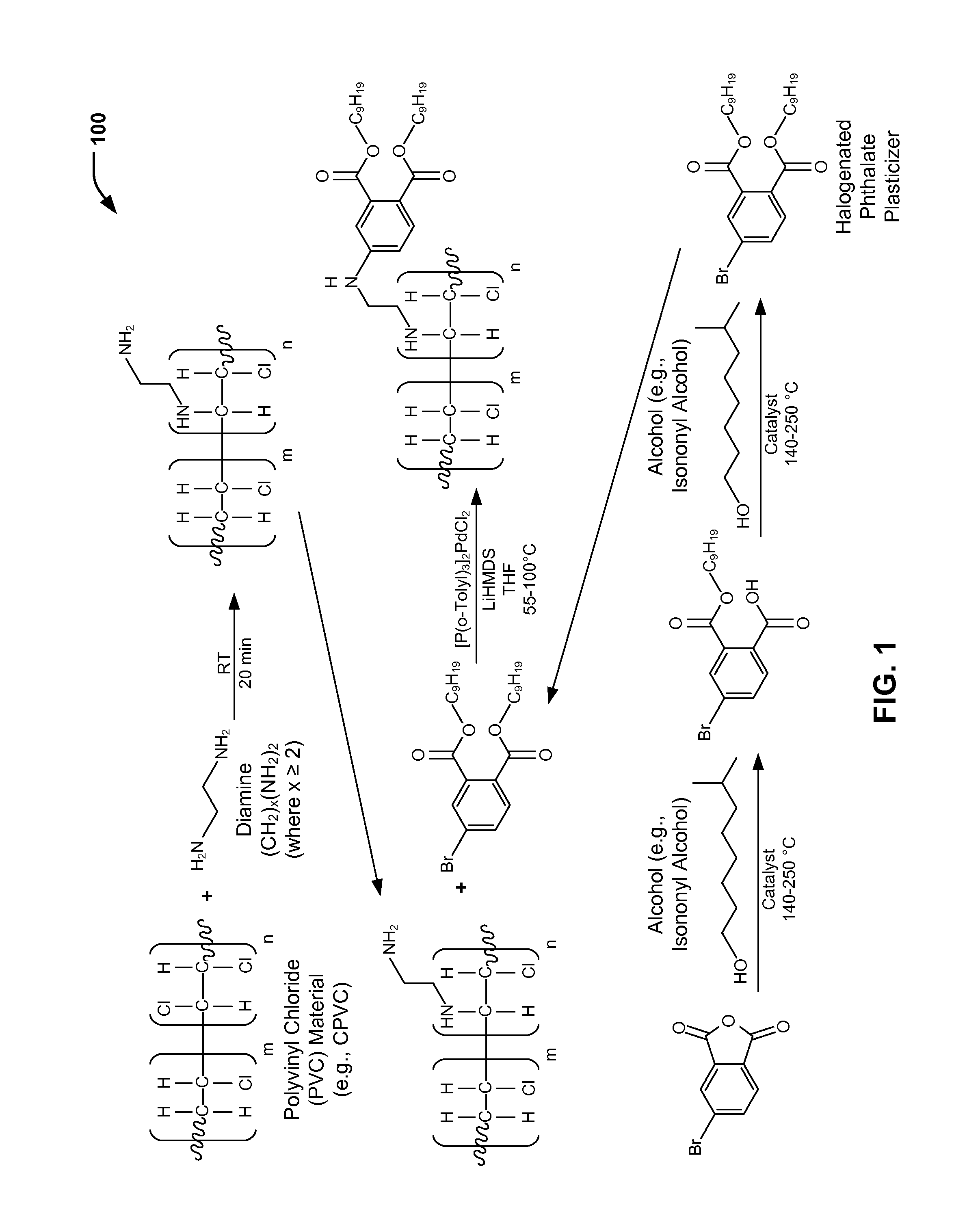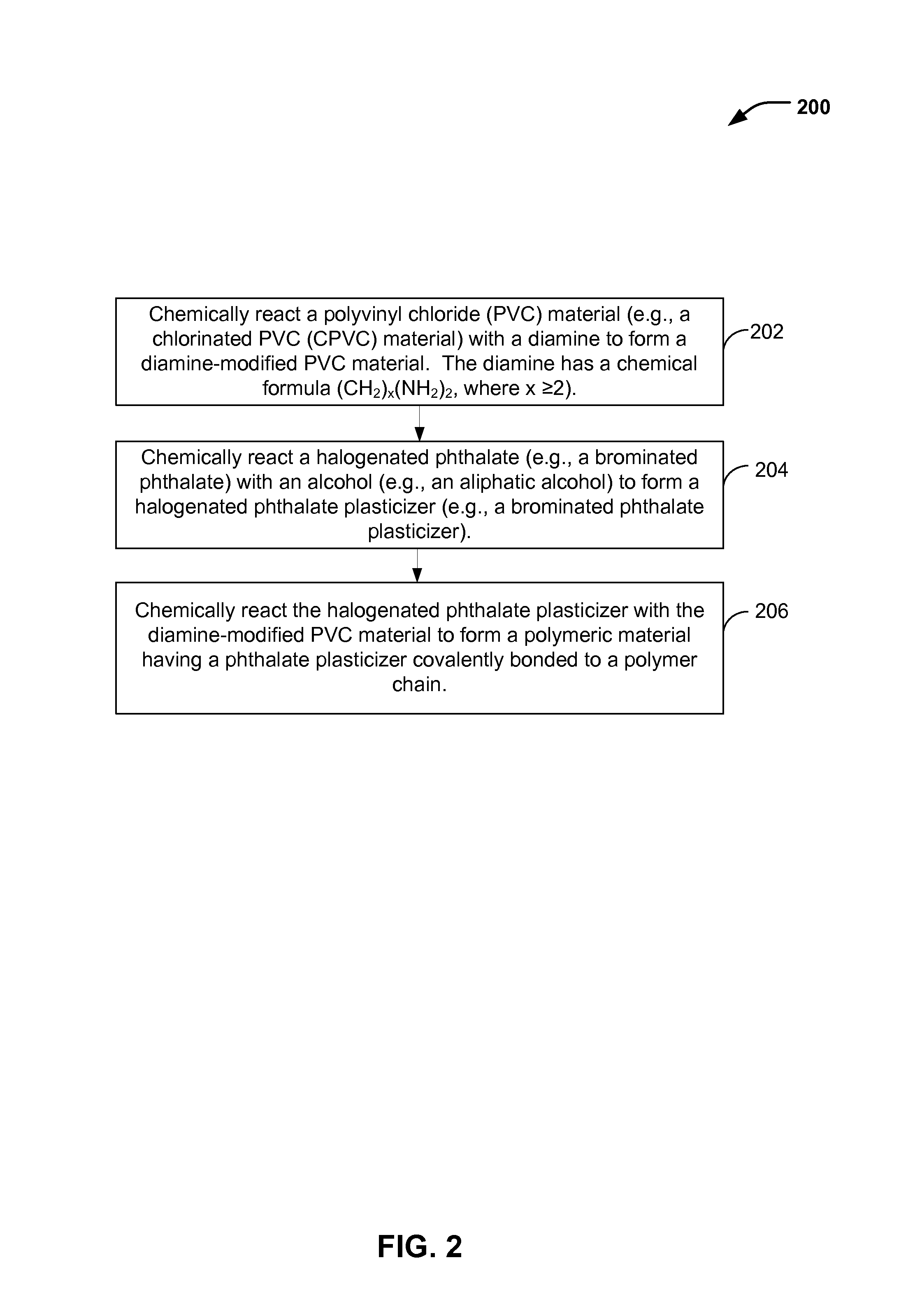Polymeric materials having phthalate plasticizers covalently bonded to a polymer chain
a technology of plasticizers and polymer chains, applied in the field of polymer materials having phthalate plasticizers covalently bonded to a polymer chain, can solve the problems of degradation of material properties of pvc-insulated wires/cabling, and achieve the effect of reducing/preventing leaching of plasticizers and improving the freedom of movement of aromatic groups
- Summary
- Abstract
- Description
- Claims
- Application Information
AI Technical Summary
Benefits of technology
Problems solved by technology
Method used
Image
Examples
Embodiment Construction
[0010]The present disclosure describes polymeric materials having phthalate plasticizers covalently bonded to a polymer chain and processes of producing such polymeric materials. In the present disclosure, a diamine having a chemical formula (CH2)x(NH2)2, where x is not less than 2, may be used to form a diamine-modified polymeric material (e.g., a diamine-modified PVC material). The diamine-modified polymeric material may be chemically reacted with a halogenated phthalate plasticizer (e.g., a brominated phthalate plasticizer) to form a polymer material having a phthalate plasticizer that is covalently bonded to a polymer chain. As described further herein, the use of a diamine having an alkyl chain length of at least 2 may allow for sufficient separation of an aromatic portion of the phthalate plasticizer from the polymer chain for freedom of movement (and associated plasticization benefits). Additionally, as described further herein, covalently bonding the phthalate plasticizer to...
PUM
| Property | Measurement | Unit |
|---|---|---|
| Aliphatic | aaaaa | aaaaa |
Abstract
Description
Claims
Application Information
 Login to View More
Login to View More - R&D
- Intellectual Property
- Life Sciences
- Materials
- Tech Scout
- Unparalleled Data Quality
- Higher Quality Content
- 60% Fewer Hallucinations
Browse by: Latest US Patents, China's latest patents, Technical Efficacy Thesaurus, Application Domain, Technology Topic, Popular Technical Reports.
© 2025 PatSnap. All rights reserved.Legal|Privacy policy|Modern Slavery Act Transparency Statement|Sitemap|About US| Contact US: help@patsnap.com


